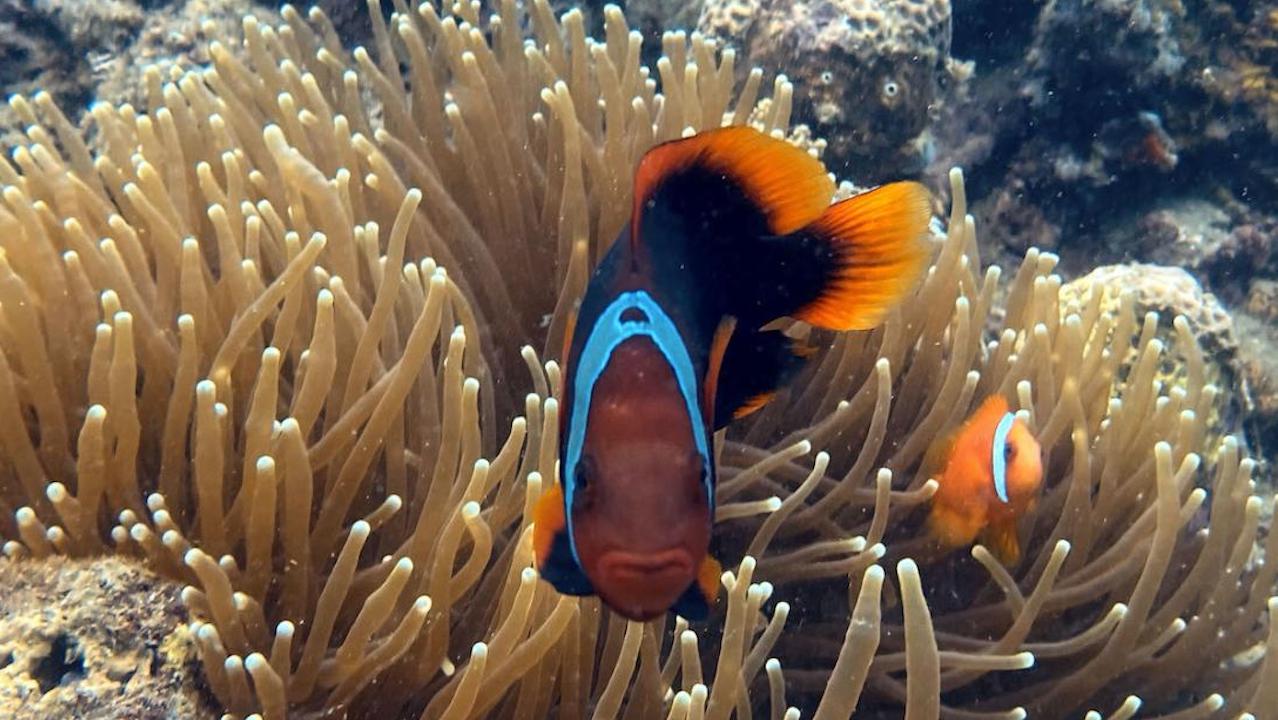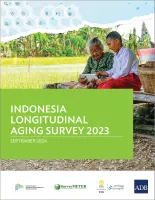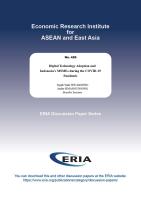
Over 85% of remaining coral reefs in Asia and the Pacific are vulnerable to typhoons and other risks. Photo credit: ADB.
With parametric insurance, payouts can be made immediately after a typhoon, making it an effective tool to fund rapid restoration of coral reefs.
When Typhoon Yolanda, internationally known as Haiyan, made landfall in the Philippines in 2013, not only did it cause fatalities and an estimated $1 billion–$10.5 billion in damage in property and infrastructure, production, and social structures, it also destroyed swathes of coral reefs in its wake. Yolanda was one of the most powerful tropical cyclones ever recorded, sustaining wind speeds close to 250 kilometers per hour and 12-meter waves.
Across Asia and the Pacific, coral reefs face threats from typhoons every year. These critical marine ecosystems also face risks from other threats like bleaching events, as well as overfishing, pollution, sediment runoff, and coastal developments.
Faced with such risks, over 85% of remaining coral reefs in the Asia and the Pacific are threatened.
Sustainable Finance for Asia and the Pacific: Protecting and Restoring Coral Reefs, a new report from the Asian Development Bank (ADB), highlighted the importance of protecting coral reefs and deploying innovative funding mechanisms to restore these critical ecosystems. “Coral reef benefits in the region will only continue if these vital ecosystems are adequately protected and restored,” said the study.
Losing more of these critical ecosystems can lead to economic loss.
Nearly 150 million people live within 30 kilometers of a reef in the Asia–Pacific, which is home to over half of coral reef fishers globally (3.8 million out of 6.1 million people). In addition, 1 square kilometer of healthy coral reef can provide as much as $900,000 in associated tourism value and provide hundreds of millions of dollars in annual flood production benefits.
According to a 2018 report from a United Nations-led global initiative protecting coral reefs, annualized total economic returns under a scenario where reefs in the Coral Triangle stay healthy are projected at $16.1 billion versus $13.5 billion under a degraded scenario. The Coral Triangle refers to the network of coral reefs considered as the global center of tropical marine diversity. It supports the highest number of species of coral reef fishes, and turtles. The roughly triangular area covers 5.7 million square kilometers of tropical marine waters of six countries, including BIMP-EAGA countries—Indonesia, Malaysia, and Philippines.
Restoring reefs
To ensure the full recovery of coral reefs after sustaining damage, active restoration and repair is needed. For example, following a tropical cyclone, immediate response (within 90 days of the storm) greatly increases the chance that the coral will recover and survive. Medium- to long-term restoration efforts may also be needed. Reef restorations can last as much as 2 to 5 years after major tropical cyclones.
A range of financial schemes and funding sources can be used to manage risks to coral reefs. Traditionally, government funds, grants, and tourism revenue have been used to fund coral reef restoration and repair. These traditional sources, however, are frequently not enough to cover the full restoration and repair of coral reefs.
In more recent years, there has been increasing focus on developing innovative funding sources, such as insurance, to complement these traditional sources of funding. Insurance payouts following a disaster event can be used to quickly fund the repair of damaged reefs to speed up recovery. This active emergency restoration can include debris cleanup and coral planting to help ensure that coral colonies and reefs remain intact and are able to continue to benefit coastal communities.
Parametric insurance
Parametric insurance is one of the innovative funding sources currently available. It allows immediate payouts when pre-agreed weather thresholds, such as wind speed greater than 64 knots, are exceeded. This feature makes parametric insurance an effective tool to fund the rapid emergency restoration of coral reefs post damage.
In a conventional product like indemnity insurance, payout can take time to be completed since assessments of damage can take months. With parametric insurance, the payout can occur in a matter of days. However, the conditions that trigger parametric insurance payouts must be objective measures collected independently by a third party, and the data on the conditions must be available quickly after the event.
Parametric insurance policies have been placed on coral reefs in the Yucatan peninsula; the Mesoamerican Reef spanning Belize, Guatemala, Honduras, and Mexico; and in Hawaii.
The world’s first insurance policy on coral reefs was a parametric policy purchased in 2019 to cover the coral reef and beach in Quintana Roo, Mexico. The policy is triggered if wind speed within a predefined area is greater than 100 knots. Payouts are scaled with maximum recorded wind speed in a predefined area. At 100 knots, the payout is $850,000, and increases to a maximum of $2.125 million when wind speeds exceed 160 knots. On 27 October 2020, the Quintana Roo Government announced that Hurricane Delta activated the insurance with wind speeds of 100 knots, triggering a payout of $850,000.
There are other innovative funding sources that can be used alone or with other mechanisms to protect coral reefs. These include resilience insurance, insurance-linked securities, regional risk pools, emergency funds, blue bonds and green bonds, debt-for-nature swaps, blue carbon credits, resilience credits, and blended finance.
Developing a comprehensive reef management system
Ultimately, a comprehensive reef management system will include the financing of reef management, reef restoration, and post-disaster reef repair. Until sufficient funding is established, however, effective progress will not be made in reef management and restoration because a single disaster event can erase years or decades of progress. Given the rapid loss and degradation of reefs, there is an urgent need to focus on identifying opportunities for and piloting reef insurance policies as a specific policy frequently takes months or years to develop.
An overarching reef risk management strategy will help reef managers and beneficiaries of the reef’s ecosystem services assess the risks faced by particular coral reefs and determine the most cost-effective funding sources to manage these risks.
The following steps can be followed to develop a coral reef risk management strategy:
- Assess and understand the risks to the identified coral reefs.
- Determine the extent and probability of physical damage and/or economic impact that each risk may cause.
- Identify the needed response to reduce damage to coral reefs and to the economy.
- Assess the cost of these response efforts. Compare these costs to the estimated losses that would occur without the reef in place.
- Compare the costs and benefits of financial schemes and select those providing the highest rate of return. Several innovative funding sources may be chosen. For example, insurance policies could be paired with emergency funds and other local resources to effectively fund reef management, restoration, and post-disaster repair.
This article was first published by BIMP-EAGA on 6 February 2024.

BIMP-EAGA
The Brunei Darussalam–Indonesia–Malaysia–Philippines East ASEAN Growth Area, or BIMP-EAGA, is a cooperation initiative established in 1994 to spur development in remote and less developed areas in the four participating Southeast Asian countries.

